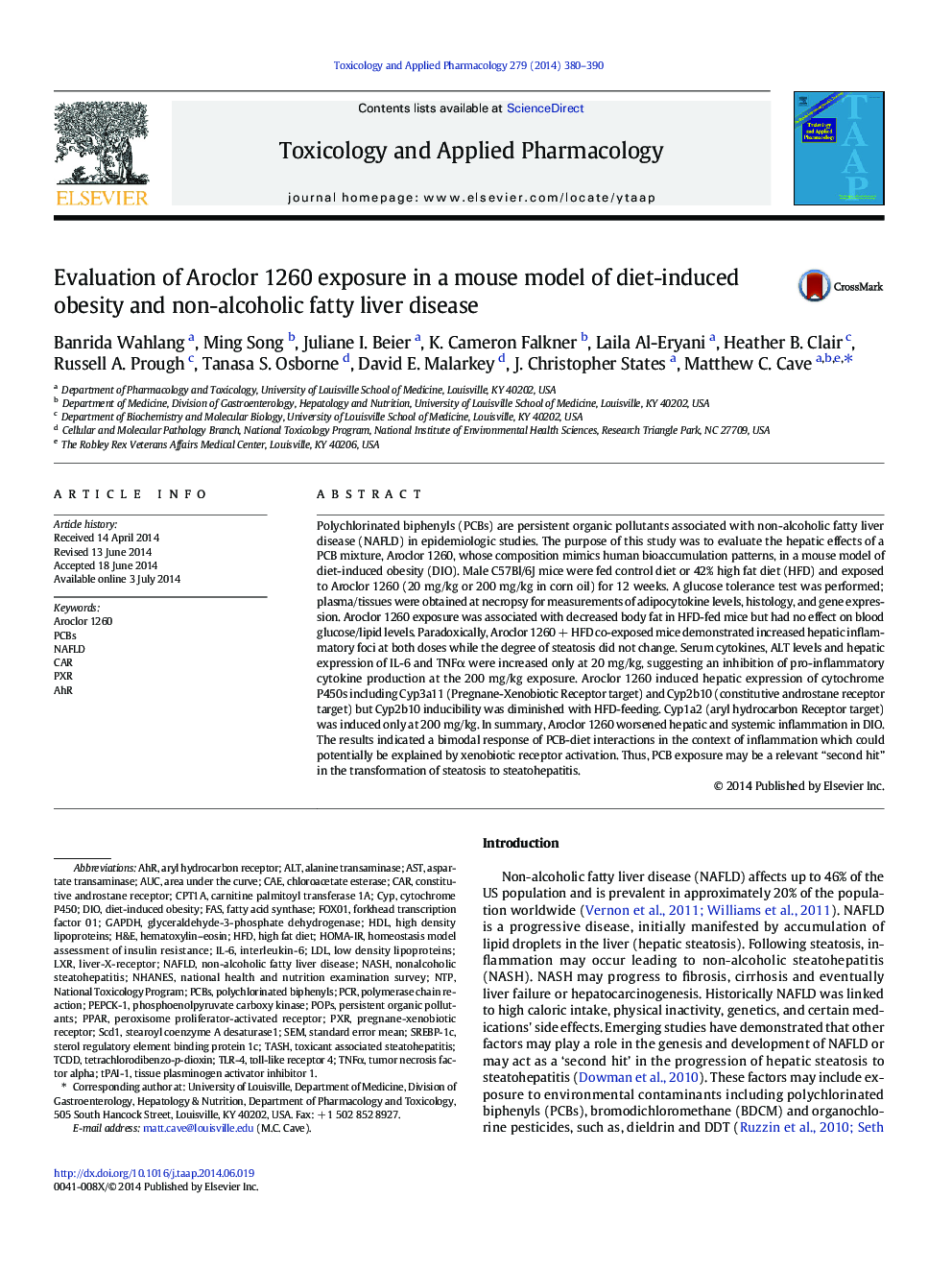| کد مقاله | کد نشریه | سال انتشار | مقاله انگلیسی | نسخه تمام متن |
|---|---|---|---|---|
| 2568557 | 1128465 | 2014 | 11 صفحه PDF | دانلود رایگان |

• Aroclor 1260 exposure decreased adiposity in mice fed with high fat diet
• Aroclor 1260 exposure induced steatohepatitis in diet-induced obese mice
• Aroclor 1260 (20 & 200 mg/kg) induced Cyp2b10 and Cyp3a11 (CAR/PXR target genes)
• Aroclor 1260 at 200 mg/kg induced Cyp1a2 (AhR target gene)
Polychlorinated biphenyls (PCBs) are persistent organic pollutants associated with non-alcoholic fatty liver disease (NAFLD) in epidemiologic studies. The purpose of this study was to evaluate the hepatic effects of a PCB mixture, Aroclor 1260, whose composition mimics human bioaccumulation patterns, in a mouse model of diet-induced obesity (DIO). Male C57Bl/6J mice were fed control diet or 42% high fat diet (HFD) and exposed to Aroclor 1260 (20 mg/kg or 200 mg/kg in corn oil) for 12 weeks. A glucose tolerance test was performed; plasma/tissues were obtained at necropsy for measurements of adipocytokine levels, histology, and gene expression. Aroclor 1260 exposure was associated with decreased body fat in HFD-fed mice but had no effect on blood glucose/lipid levels. Paradoxically, Aroclor 1260 + HFD co-exposed mice demonstrated increased hepatic inflammatory foci at both doses while the degree of steatosis did not change. Serum cytokines, ALT levels and hepatic expression of IL-6 and TNFα were increased only at 20 mg/kg, suggesting an inhibition of pro-inflammatory cytokine production at the 200 mg/kg exposure. Aroclor 1260 induced hepatic expression of cytochrome P450s including Cyp3a11 (Pregnane-Xenobiotic Receptor target) and Cyp2b10 (constitutive androstane receptor target) but Cyp2b10 inducibility was diminished with HFD-feeding. Cyp1a2 (aryl hydrocarbon Receptor target) was induced only at 200 mg/kg. In summary, Aroclor 1260 worsened hepatic and systemic inflammation in DIO. The results indicated a bimodal response of PCB-diet interactions in the context of inflammation which could potentially be explained by xenobiotic receptor activation. Thus, PCB exposure may be a relevant “second hit” in the transformation of steatosis to steatohepatitis.
Figure optionsDownload high-quality image (187 K)Download as PowerPoint slide
Journal: Toxicology and Applied Pharmacology - Volume 279, Issue 3, 15 September 2014, Pages 380–390